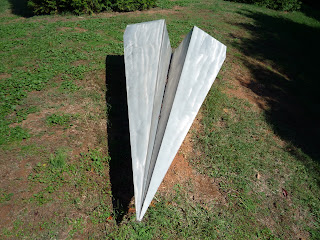So let's get the meat of this post. "400-500 words of your reflection of the course as a whole, a personal note to say what worked best for you and what failed..." Where do I start? It looks like this post could easily degrade into another one of those where I talk about my emotions. Still don't quite have that whole idea down quite yet...let's see where we end up.
Since this course really isn't too involved, it is appropriate for graduate students to teach and, of course, this was the case in my class. I really like the idea of graduate students teaching the course as it sort of allows students to interact with one of their teachers on more of a peer-to-peer basis than a high-and-lofty-professor-to-student basis. I mean, what conventional professor would Skype their student through Facebook to talk about a rough draft? That was pretty cool. I think the interactive student-teacher experience was the most valuable facet of the course.
Overall I enjoyed the class. I would cut the readings and would have had Charlsie make breakfast more, but other than that I can't complain. (Don't pay attention to the breakfast reference. I really enjoyed those muffins on the three occasions we were lucky enough to get them.)
So I guess that's that. Maybe in closing it would be best to draw in a quote from my very first post, composed on August 26: "Hopefully by this time in four months I will be able to distinguish more clearly between good and bad reasoning as well as sharpen my own skills of persuasion." Fortunately for me, I would say the class has caused me to accomplish just that.
Since this course really isn't too involved, it is appropriate for graduate students to teach and, of course, this was the case in my class. I really like the idea of graduate students teaching the course as it sort of allows students to interact with one of their teachers on more of a peer-to-peer basis than a high-and-lofty-professor-to-student basis. I mean, what conventional professor would Skype their student through Facebook to talk about a rough draft? That was pretty cool. I think the interactive student-teacher experience was the most valuable facet of the course.
Overall I enjoyed the class. I would cut the readings and would have had Charlsie make breakfast more, but other than that I can't complain. (Don't pay attention to the breakfast reference. I really enjoyed those muffins on the three occasions we were lucky enough to get them.)
So I guess that's that. Maybe in closing it would be best to draw in a quote from my very first post, composed on August 26: "Hopefully by this time in four months I will be able to distinguish more clearly between good and bad reasoning as well as sharpen my own skills of persuasion." Fortunately for me, I would say the class has caused me to accomplish just that.








